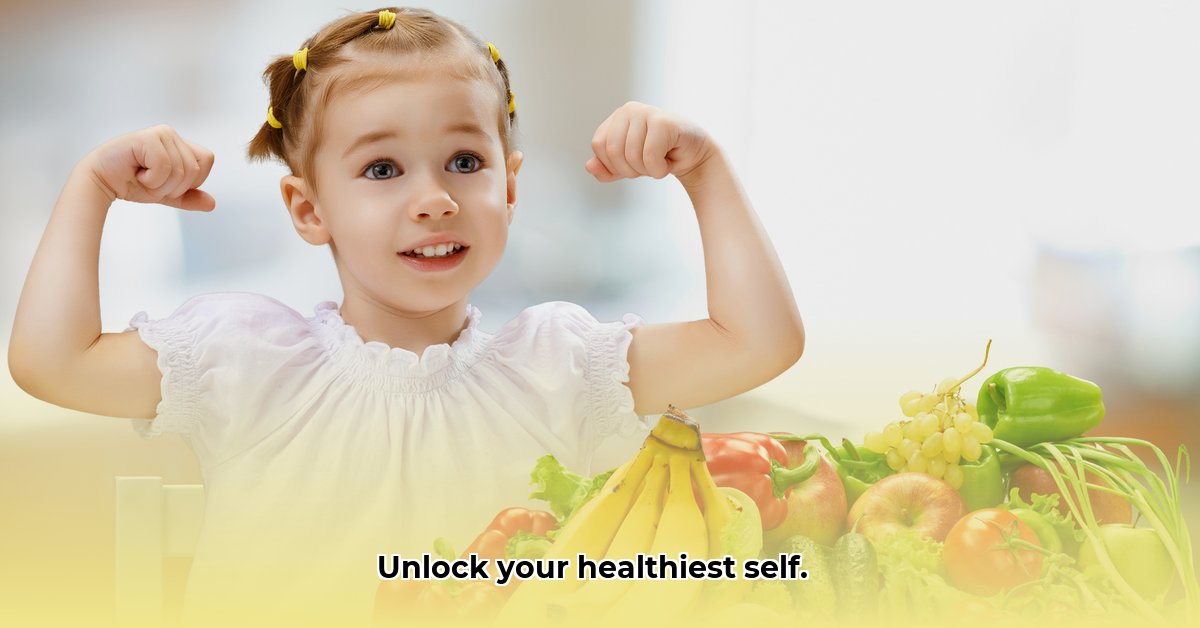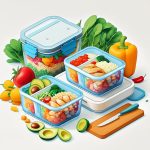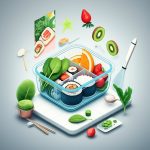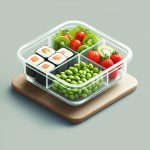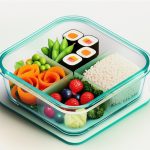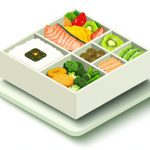Let’s be honest, healthy eating can be confusing! This guide uses pictures to make it easier. We’ll show you how to understand what healthy food really looks like, avoid common pitfalls, and even use food photos to plan your meals. It’s like having a dietitian’s insights, delivered with inspiring images that make healthy choices feel totally doable. For extra motivation, check out these inspiring quotes. Get ready to transform your relationship with food—one picture at a time!
Pictures of Healthy Eating: Fueling Your Wellness Journey
Let’s face it, we all love a good picture, especially when it comes to food! But pictures of healthy eating are more than just pretty visuals; they’re powerful tools that can actually help you make better choices and reach your wellness goals. Think about your social media feed – what grabs your attention? Often, it’s the mouthwatering images that make you say, “Wow, I want that!” This same principle works wonders when it comes to inspiring healthier habits. We’re going to explore how these visual cues can help you achieve your healthy eating aspirations.
The Amazing Power of Visual Inspiration
It’s not just about aesthetics. Seeing a vibrant, colorful salad or a plate bursting with fresh ingredients isn’t just pleasing to the eye; it can actually trigger a positive response in your brain, making you crave healthier options. These images act like little motivators, subtly cheering you on towards your wellness goals. They’re a subtle but effective way to shift your mindset and build positive associations with healthy foods. Instead of seeing a bowl of broccoli as a chore, you might start to see it as a delicious and vibrant part of a satisfying meal. That’s the power of visual inspiration at work.
Decoding the Visuals: What Makes a Healthy Image Really Pop?
What separates a simple snapshot from a truly inspiring picture of healthy food? It’s all in the details! High-impact images for healthy eating tend to have several key elements:
- A Burst of Color: Think of a rainbow of veggies, the juicy redness of a ripe tomato, or the deep green of leafy greens. Bright, vibrant colors instantly signal freshness and nutrition, making the food look incredibly appetizing.
- Natural Light: Good lighting can transform an ordinary dish into something spectacular. Natural sunlight is especially flattering, highlighting the textures and colors of fresh ingredients.
- Textural Variety: A picture showing the satisfying crunch of a salad, the creamy texture of avocado, and the slight chewiness of whole-grain bread is far more inviting than a plate of uniform, processed food. The combination of textures adds visual interest and hints at the variety of flavors and nutrients present.
- Artistic Arrangement: The way food is presented matters! An artfully arranged plate, showcasing the beauty of the ingredients, makes healthy eating seem less like a task and more like a culinary experience. It’s all about making healthy food look as delicious as it tastes.
- Authenticity is Key: Avoid images that are overly styled or unrealistic. We’re aiming for inspiration, not perfection. Real food is more likely to resonate.
Putting Pictures of Healthy Eating to Work for You
Ready to harness the power of visual cues? Here’s how you can use pictures of healthy eating to supercharge your healthy eating journey:
- Create a Vision Board: Gather images that resonate with your healthy eating goals. These could be pictures of delicious salads, vibrant vegetable dishes, or even just nature scenes that evoke a feeling of wellbeing. Pin them up where you’ll see them daily – on your fridge, your computer screen, or even your bathroom mirror! This constant visual reminder will keep your goals top of mind.
- Follow Inspiring Accounts: Find accounts on social media that showcase delicious and visually appealing healthy recipes. It’s easy to get discouraged if healthy eating looks boring or bland, but these accounts can demonstrate that healthy food can also be incredibly tasty and attractive. Look for registered dietitians, chefs specializing in healthy cuisine, and everyday people sharing their real-life healthy meals.
- Visualize Your Meals: Before heading to the grocery store, browse some images of healthy meal ideas. This helps you plan your shopping list and prevents impulsive purchases of unhealthy options. You’ll be more likely to stick to your plan if you’ve already visualized the meals you’ll enjoy. Consider creating a Pinterest board with healthy recipes you want to try, categorized by meal type or ingredient.
- Document Your Success: Take your own pictures! Capture your healthy creations – you’ll be amazed at how seeing your progress, visually documented, can boost your motivation. It’s a great way to celebrate your achievements and stay accountable. Share your creations on social media and inspire others!
- Join Online Communities: Many online groups share healthy recipes and pictures. The support and encouragement you receive from a community can be invaluable in maintaining your healthy eating habits. Look for groups focused on specific dietary approaches, such as plant-based eating or mindful eating.
Beyond the Pictures: The Whole Picture of Healthy Eating
While pictures are great for motivation, remember that lasting healthy eating is about more than just aesthetically pleasing meals. It’s about mindful eating, balancing your nutrition, and listening to what your body needs. Think of these images as powerful support tools – they’re most effective when combined with a holistic approach to wellness.
A Glimpse at Popular Dietary Approaches
Here’s a quick look at some well-known healthy eating approaches. Remember, the best diet for you depends on your individual needs and preferences. Consult a doctor or registered dietician for personalized advice.
| Dietary Approach | Description | Visual Cue | Key Nutrients |
|---|---|---|---|
| Mediterranean Diet | Abundant fruits, vegetables, whole grains, olive oil, and lean protein sources. | Sun-drenched tomatoes, olives, vibrant greens, crusty bread, and grilled fish. | Healthy fats (olive oil), antioxidants (fruits and vegetables), fiber (whole grains) |
| DASH Diet | Rich in fruits, vegetables, whole grains, lean protein, and low-fat dairy. | A colorful array of fruits and vegetables, alongside whole-grain bread and yogurt. | Potassium, magnesium, calcium (fruits, vegetables, and low-fat dairy), fiber |
| Plant-Based Diet | Emphasizes plant-based foods; may or may not include eggs and dairy. | Colorful vegetables, legumes, grains, tofu, nuts, and seeds. | Fiber, vitamins, minerals, antioxidants, plant-based protein |
| Ketogenic Diet | Very low carbohydrate, moderate protein, and high fat. | Avocado, nuts, cheese, meat, leafy green vegetables | Healthy fats, limited carbohydrates |
The journey to better health is a personal one. Use pictures as inspiration, support your efforts with a balanced approach, and celebrate your successes along the way. Remember, consistency and a positive mindset are key ingredients in achieving your wellness goals.
How to Plan a Balanced Plant-Based Diet for Optimal Nutrition
Plant-based eating is booming! More and more people are exploring this lifestyle, drawn by its health and environmental benefits. But how to plan a balanced plant-based diet for optimal nutrition can feel daunting. Let’s break it down with actionable tips and visual examples.
Understanding the Basics
A successful plant-based diet isn’t just about eliminating meat; it’s about building a nutritionally complete eating pattern. This means focusing on a variety of whole, unprocessed plant foods. Think vibrant fruits and vegetables, legumes, whole grains, nuts, and seeds. Variety is key! It ensures you get a wide range of vitamins, minerals, and antioxidants.
- Visual Tip: Imagine a plate divided into sections: one section overflowing with colorful vegetables, another with a hearty grain like quinoa or brown rice, and a third with a protein source like lentils or tofu. This visual helps you visualize a balanced meal.
Addressing Potential Nutrient Gaps
While plant-based diets offer abundant nutrients, some require extra attention. Vitamin B12 is famously absent from plant sources, so supplementation is often recommended. Iron absorption can be lower from plant foods, so pairing iron-rich foods (like lentils) with vitamin C-rich foods (like bell peppers) boosts your body’s ability to absorb the iron. Getting enough calcium and omega-3 fatty acids also requires careful planning. Fortified foods and supplements can help fill these nutritional gaps.
- Visual Tip: Create a checklist of essential nutrients (B12, iron, calcium, omega-3s) and track your intake through a food diary or app. This helps you identify potential gaps and adjust your diet accordingly.
Building a Balanced Plate
What does a balanced plant-based meal look like? It’s not rocket science! Aim for a colorful plate packed with:
- Protein Powerhouses: Legumes (lentils, beans, chickpeas), tofu, tempeh, edamame, nuts, seeds, quinoa.
- Fiber Fiesta: Whole grains (brown rice, quinoa, oats), fruits, vegetables, legumes. Fiber keeps you feeling full and supports gut health.
- Healthy Fats: Avocado, nuts, seeds, olive oil. These are vital for hormone production and nutrient absorption.
- Vitamin & Mineral Boost: A wide array of colorful fruits and vegetables is essential. Each color provides unique phytonutrients.
*
- Glass Lunch Box Containers Offer Healthy, Leak-Proof Meal Prep - December 21, 2025
- Glass Bento Boxes Offer a Healthy, Eco-Friendly Lunch Solution - December 20, 2025
- Glass Bento Containers Make Packing Lunch Easier and Healthier - December 19, 2025
